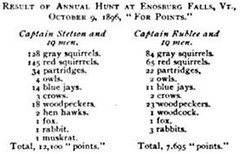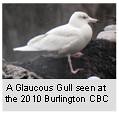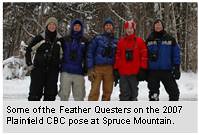 A group of 27 bird enthusiasts set out on Christmas Day, 1900 to count the birds they saw. This simple act was the creation of a century-long crusade that engaged over 60,000 people this past season. Creator Frank Chapman recognized the potential of the bird count from the beginning. In the announcement of the sixth bird count Chapman proclaimed “…we are gradually accumulating a mass of exact information… having, consequently, a real scientific value.” Now, 110 years later, the CBC has been cited in hundreds of papers and is now considered one of 24 major
A group of 27 bird enthusiasts set out on Christmas Day, 1900 to count the birds they saw. This simple act was the creation of a century-long crusade that engaged over 60,000 people this past season. Creator Frank Chapman recognized the potential of the bird count from the beginning. In the announcement of the sixth bird count Chapman proclaimed “…we are gradually accumulating a mass of exact information… having, consequently, a real scientific value.” Now, 110 years later, the CBC has been cited in hundreds of papers and is now considered one of 24 major indicators of climate impacts by the EPA.
 Originally proposed by Frank Chapman, the CBC was proposed as an alternative to the ‘side hunt’, a tradition of the times that involved two teams of men competing in a kill-competition to see which team can accrue the most animal carcasses. In Enosburg Falls, VT, the participants of an 1896 side hunt collected a bevy of over 550 birds and mammals(see above). Not surprisingly, those numbers were drastically reduced in 1897. Through Bird Lore, the popular magazine Chapman published, he announced “a new kind of Christmas side hunt in the form of a Christmas bird-census”.
Originally proposed by Frank Chapman, the CBC was proposed as an alternative to the ‘side hunt’, a tradition of the times that involved two teams of men competing in a kill-competition to see which team can accrue the most animal carcasses. In Enosburg Falls, VT, the participants of an 1896 side hunt collected a bevy of over 550 birds and mammals(see above). Not surprisingly, those numbers were drastically reduced in 1897. Through Bird Lore, the popular magazine Chapman published, he announced “a new kind of Christmas side hunt in the form of a Christmas bird-census”. By 1902, the third year of the CBC, Vermonters were already participating. Gilbert H. Trafton spent six hours on Christmas Day scouring Randolph Center for birds and tallying a shrike, two White-breasted Nuthatches, and a chickadee. “The number of birds seen was very small,” remarked Trafton, “but it gives a fair indication of the winter bird-life here. I pass many days without seeing or hearing a single bird.” This statement held true to Chapman’s original intent to capture a census of observations both unusual and mundane, but thankfully, Vermont CBC’s since then have produced plenty of birds both common and rare.
By 1902, the third year of the CBC, Vermonters were already participating. Gilbert H. Trafton spent six hours on Christmas Day scouring Randolph Center for birds and tallying a shrike, two White-breasted Nuthatches, and a chickadee. “The number of birds seen was very small,” remarked Trafton, “but it gives a fair indication of the winter bird-life here. I pass many days without seeing or hearing a single bird.” This statement held true to Chapman’s original intent to capture a census of observations both unusual and mundane, but thankfully, Vermont CBC’s since then have produced plenty of birds both common and rare. The CBC in Vermont has come a long way since the first in 1902, which counted just four birds. In 2010, over 350 participants performed 17 counts tallying around 100,000 birds of over 100 species. The increase in popularity isn’t isolated to Vermont. Increasing numbers of CBC’s are being held in Latin America, the Caribbean Islands, and elsewhere. In 2009, a CBC was even held in Antarctica.
The CBC in Vermont has come a long way since the first in 1902, which counted just four birds. In 2010, over 350 participants performed 17 counts tallying around 100,000 birds of over 100 species. The increase in popularity isn’t isolated to Vermont. Increasing numbers of CBC’s are being held in Latin America, the Caribbean Islands, and elsewhere. In 2009, a CBC was even held in Antarctica. With its growth in size, the CBC has become a powerful tool in knowing and understanding the population trends of birds in winter. One can see the rise of Wild Turkey and the decline of Evening Grosbeak. We can even see the effects of climate change as species like Carolina Wren spread north. Only time will tell what other trends the CBC reveals, but for it to continue to be useful, we’re counting on you to count the birds.
This article originated from the Nature Center's Youth Birding Newsletter

No comments:
Post a Comment